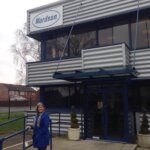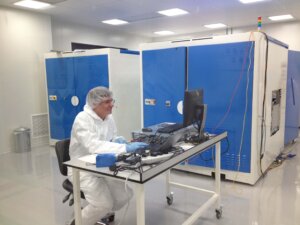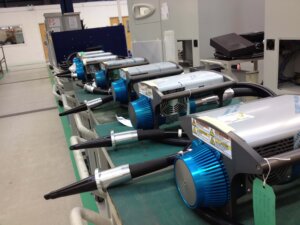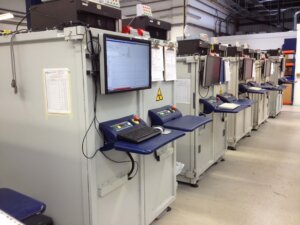
One year ago, I visited Nordson DAGE at its R&D center in Colchester, to learn about the company’s latest foray into X-ray metrology at the production level with the launch of the XM8000. Rather than just using X-ray for inspection, this tool also analyzes the data to allow for full measurement capabilities of voids in wafer bumps and filled through silicon vias (TSVs). On my way to DATE 2015 in Grenoble, I decided to swing by Nordson DAGE’s corporate headquarters in Aylesbury, England, to see how things were progressing, and get a peek at the tool production facilities.

According to David Bernard, business manager, automated X-ray systems, Nordson DAGE, things are progressing nicely, particularly in wafer bump applications, as market demand for fan-out wafer level packaging (FOWP) increases. A number of tools have been sold, he said, and there is growing interest among the foundries for TSV inspection as products implementing TSVs go beyond the test vehicle stage and companies are figuring out how to produce them in volume. “TSVs are beginning to become more interesting,” said Bernard, “Customers know how to make them; how to do it at the right yields is what’s next.” As test and inspection are considered cost adders (or as Bernard puts it, “grudge purchases”), they are traditionally “kicked down the road” until absolutely necessary. With manufacturers’ promising to roll out 3D products by the end of 2015, at least in memory stacks for the high-end computing space, that time is now.

Launching and promoting the XM8000 hasn’t been about “introducing a new product to the existing customer base, but about educating a new customer base about a completely new technology that’s available to them,” explained Bernard.
Traditionally, the only way to check for voids in filled TSVs has been to use a Focused Ion Beam (FIB) tool. Gernerally, only one TSV is inspected in a test sample, and its destroyed in the process. While that approach works fine in failure analysis labs for test vehicles, its not suitable for the production environment. That’s where Nordson DAGE’s sealed transmission tube x-ray metrology technology comes in. This is the first time an x-ray technology is used for go beyond scanning for surface defects, and can be used to look at multiple layers. Unique to the XM8000 is the capability to both measure and determine the location of a bump, or find a void and tell its location, explained Bernard.

What does Success Look Like?
For 3D integration, Bernard says success means the emergence and adoption of TSVs, which requires, among other things, figuring out how to production-ize it, get good yield, and make it a mainstream manufacturing capability, offering an alternative to existing technologies. For Nordson DAGE, it means continued adoption of the XM8000 as part of the production environment for wafer bumps and TSVs, and moving the technology downstream from the wafer fab and foundry to the OSATS, to provide metrology solutions for stacking in packages. The end goal is to enable more testing without it costing more time and money, while providing better service to customers. You can learn more about the technology behind X-ray metrology for TSVs and wafer bumps in this white paper. ~ F.v.T.























